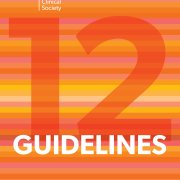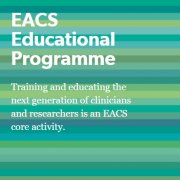From version 8.2 to 9.0
ANTIRETROVIRAL TREATMENT SECTION
What to start with: Older ARVs (LPV/r) have been removed. The order of the listed regimens was changed to reflect the preference of use based on the data available. The structure of the table was changed to facilitate the reading of essential information. Footnotes were added: A note on when to prefer TAF over TDF; a note on the potential CVD toxicity of DRV; a note on ATV and renal toxicity.
Primary HIV infection: Recommendation that all HIV-positive women of reproductive age should have a pregnancy test was added.
Switch strategies: Indications for switch were added (HCV treatment, renal/bone toxicity). DTG+RPV regimen was added as switch option. DTG monotherapy was added in the strategies not recommended. The wording and structure of “Class-sparing strategies” was changed to improve clarity.
Virological failure: Changes in the definition were made to differenti- ate “incomplete suppression” from “virological rebound”. A note on the importance of taking into consideration all the available resistance tests when choosing a new regimen in patient with virological failure was added.
ARV in pregnancy: A recommendation on use of INSTI in pregnant women who start ARVs in the late second or third trimester was added.
A warning note on EFV in pregnancy was removed. EFV, RAL, RPV or DRV/r can be continued during pregnancy. Women on EVG/c need to be informed that more monitoring of HIV-VL and drug levels may be necessary during pregnancy. A recommendation against the initial use of TAF and cobicistat was added. A recommendation against breast- feeding was added.
Post-Exposure Prophylaxis (PEP): A note on providing emergency contraception counselling for sexual exposure was added.
CO-MORBIDITIES SECTION
Four entirely new sections were introduced on:
- Non-Alcoholic Fatty Liver Disease (NAFLD)
- Chronic lung disease
- Prescribing in elderly
- Solid Organ Transplantation (SOT)
New drug-drug interaction tables were included on bronchodilators, pulmonary antihypertensives and immunosuppressants.
The drug-drug interaction table on antimalarial drugs was changed to a format, similar to all remaining drug-drug interaction tables.
ATV/c data were added to all drug-drug interaction tables.
Ischaemic heart disease was added as a potential adverse effect of DRV/r.
Recommendations for screening for anal cancer were extended to also include all persons with HPV-associated dysplasia; screening for cervical cancer now includes all HIV-positive women > 21 years of age or within one year after sexual debut.
Blood pressure targets were lowered for high risk individuals and where resources allow to SBT < 130 and DBT < 80 mmHg.
Diabetes management was revised and sulfonylureas are now only recommended in combination with metformin. Limited data remain for any oral antidiabetic agents in terms of CVD prevention in the HIV-positive population.
A new lipid lowering drug class of PCSK9-inhibitors was added and is to be considered in high risk individuals inadequately controlled on top statin dose or when statin intolerant.
Recommendations on clinical situations where TAF may be preferred over TDF were added to the bone and kidney section.
More dynamic measures of kidney function declines were added.
HPV vaccination is now recommended for all HIV-positive persons up to 26 years of age and up to 40 years if MSM.
A recommendation to screen for STIs not only for those at risk, but also during pregnancy was added.
As part of an interim update in January 2017, we have further included video links to EACS online courses on HIV management.
In the Introduction to the Guidelines, we have further emphasised that the EACS Guidelines aim to cover wide ranges of recommendations as opposed to the often more uniform national guidelines as the Guidelines geographically cover a relatively large and diverse area with different national levels of access to care.
CO-INFECTIONS SECTION
HCV core-antigen testing has been added.
HCC screening recommendations have been updated.
HBV treatment figure has been removed. Footnotes have been converted into full text with new recommendations for individuals with HBV who face immunosuppression.
Evaluation of concurrent causes of liver disease has been added to the diagnostic procedures table.
Text on HCV treatment has been shortened with emphasis on DAA table
Recommendations for individuals with failure on DAA treatment have been updated.
Recommendations for individuals with acute HCV have been updated.
HCV management figure was removed.
DDI table has been updated and now includes GLE/PIB and SOF/VEL/VOX, boceprevir and telaprevir have been deleted.
Figure on management of acute HCV has been amended.
All tables and figures dealing with IFN-containing HCV therapy have been removed. We refer to an older online version of the Guidelines for details on IFN-treatment.
OPPORTUNISTIC INFECTIONS SECTION
A comment for TMP-SMX as preferred therapy for cerebral toxoplasmosis when the oral route is not available was added.
The preliminary results of the REALITY trial in the cryptococcal disease section were added. An enhanced infection prophylaxis in severely immunosuppressed individuals (< 50 CD4 cells/µL) including INH 12 weeks, fluconazole 100 mg/day 12 weeks, azithromycin 500 mg/day for 5 days and albendazole 400 mg single dose may decrease overall opportunistic infections (including cryptococcal meningitis) and mortality.
A comment on the possibility to add fluconazole to liposomal amphotericin B during the induction phase for cryptococcal meningitis treatment in countries where flucytosine is not available was added.
Intermittent TB regimens (2 or 3 times per week) are contraindicated in HIV-positive persons.
A comment on the possibility to add steroid therapy to avoid IRIS in individuals with TB was added.
The preliminary results of the Nix-TB trial in the section of treatment for resistant TB (MDR- and XDR-TB) were added.
A duration of 9 months for latent TB treatment, particularly in countries with high TB prevalence, was emphasised.
A comment explaining that other preventive regimens are needed for treating latent infection with MDR-/XDR-TB in countries with high resistant TB rates was added.

20th European AIDS Conference
15-18 October 2025 Paris, France

EACS Guidelines updated
The EACS 12.0 and the app are available for free on

Educational Programme
Training and educating the next generation of clinicians and researchers is an EACS core activity.

EACS Resource Library
Access all scientific content of EACS core activities! (members only)